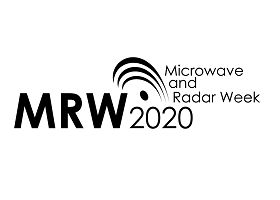Selected Papers of Microwave and Radar Week (MRW 2020)
A special issue of Remote Sensing (ISSN 2072-4292). This special issue belongs to the section "Remote Sensing Image Processing".
Deadline for manuscript submissions: closed (31 December 2020) | Viewed by 17331

Special Issue Editors
Interests: adaptive signal processing; machine learning; radar signal processing; passive radars; analog-to-digital converters
Special Issues, Collections and Topics in MDPI journals
Interests: microwaves and RF; microwave filters; microwave measurements; electromagnetics
Interests: RF and microwave power amplifiers; linear and nonlinear active microwave components, circuits, and subsystems, including MMICs
Special Issues, Collections and Topics in MDPI journals
Special Issue Information
Dear Colleagues,
Recent developments in systems involving remote sensing methods and technologies are reflected in numerous ideas and realizations of high-frequency electronics. Remote sensing, traditionally realized in systems like radars, has received attention fields such as agriculture, IoT, physics, and many others. Contactless sensors—especially those operating at large distances—have become an important part of modern technology.
Microwave and Radar Week (MRW 2020), https://mrw2020.org/, consisting of four conferences related to RF, microwaves, radars, signal processing, and THz frequency techniques, will gather papers reporting the newest advances and scientific results in the realization of RF, microwaves, THz, radar and signal processing devices, systems, and methods—especially those intended for future technology and techniques.
The aim of this Special Issue is to present the latest research results in all areas presented during MRW 2020, especially in the area of widely understood remote sensing and sensors. The contributions from leading experts in these fields of research will be collected and presented in this Special Issue. Topics include, but are not limited to:
* Microwave and THz radar imaging techniques;
* RF and microwave components used for remote sensing applications;
* Target recognition and classification in radar images;
* SAR and ISAR techniques for remote sensing application;
* Advances in large distributed systems related to remote sensing;
* Advances in measurement methods and systems related to remote sensing;
* Applications of remote sensing;
* Signal processing for remote sensing.
* Microwave and wireless technologies and applications,
* Radar technologies and applications
* Advances in signal processing and its applications, particularly in radar communications.
Prof. Dr. Paolo Colantonio
Prof. Konrad Jedrzejewski
Prof. Adam Abramowicz
Guest Editors
Manuscript Submission Information
Manuscripts should be submitted online at www.mdpi.com by registering and logging in to this website. Once you are registered, click here to go to the submission form. Manuscripts can be submitted until the deadline. All submissions that pass pre-check are peer-reviewed. Accepted papers will be published continuously in the journal (as soon as accepted) and will be listed together on the special issue website. Research articles, review articles as well as short communications are invited. For planned papers, a title and short abstract (about 100 words) can be sent to the Editorial Office for announcement on this website.
Submitted manuscripts should not have been published previously, nor be under consideration for publication elsewhere (except conference proceedings papers). All manuscripts are thoroughly refereed through a single-blind peer-review process. A guide for authors and other relevant information for submission of manuscripts is available on the Instructions for Authors page. Remote Sensing is an international peer-reviewed open access semimonthly journal published by MDPI.
Please visit the Instructions for Authors page before submitting a manuscript. The Article Processing Charge (APC) for publication in this open access journal is 2700 CHF (Swiss Francs). Submitted papers should be well formatted and use good English. Authors may use MDPI's English editing service prior to publication or during author revisions.







